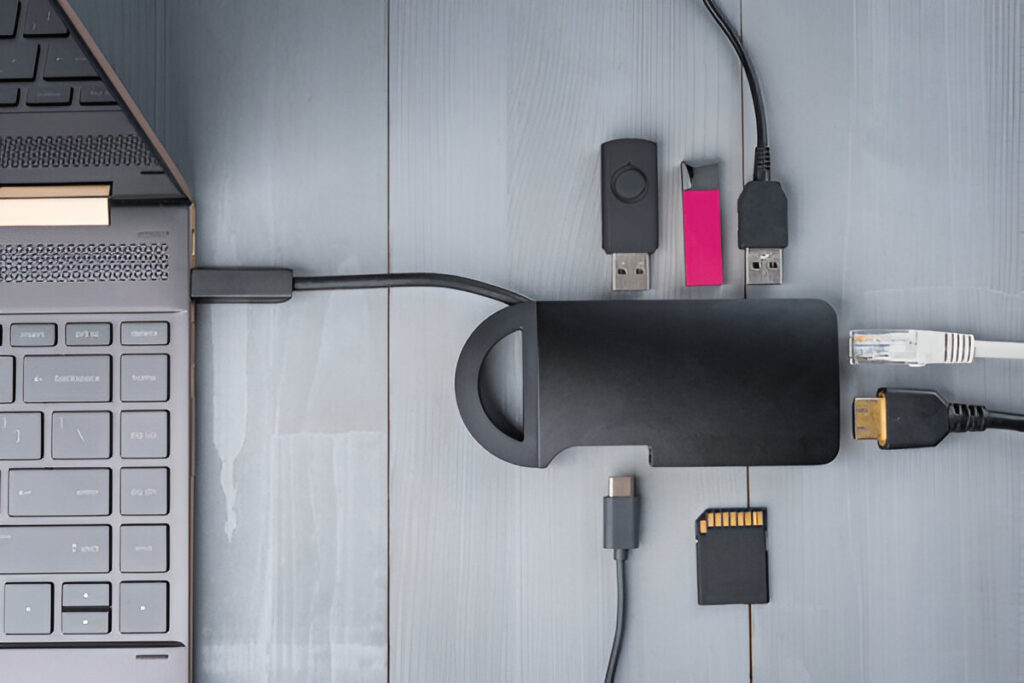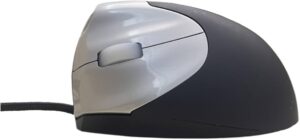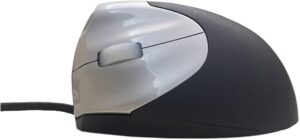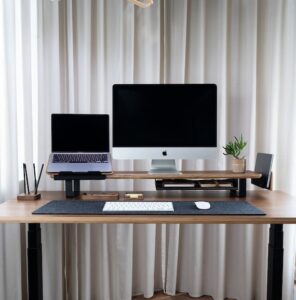There are few things more annoying than the Ethernet port on your USB-C hub not working, especially if you depend on a consistent wired connection for work or gaming. After thorough research, it has become clear that the problem of ethernet not working through USB hub connections is quite common. In this guide, we will examine the issues, offer solutions, and provide valuable product insights to ensure you get your connection back as soon as possible.
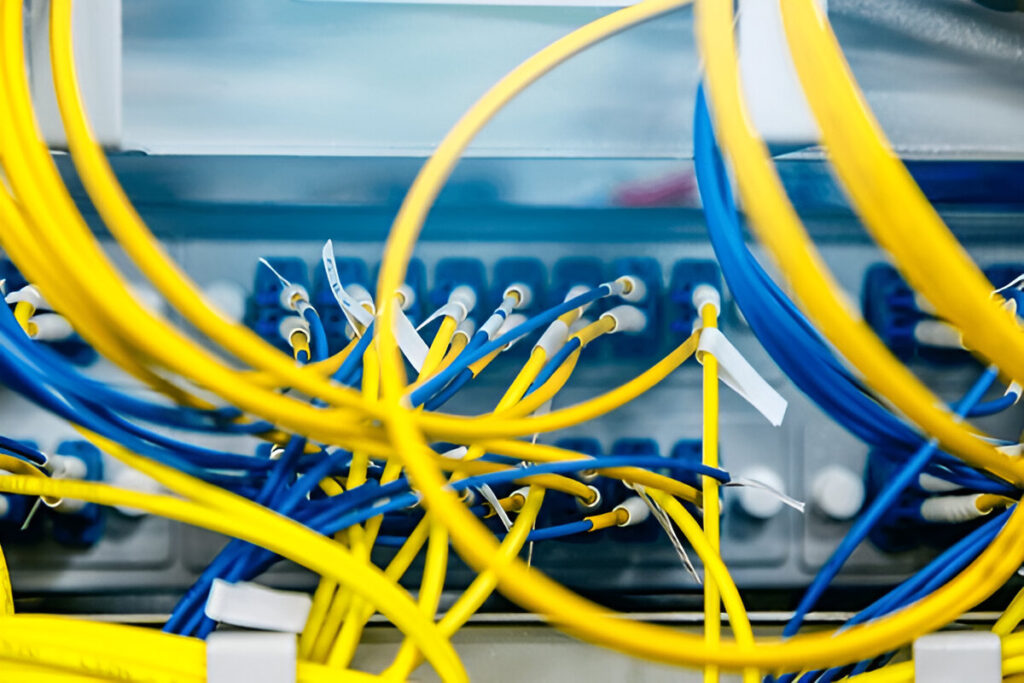
Problematic USB-C Hubs and Ethernet Connection Issues
The creation of USB-C hubs has changed the game for laptop peripheral connection. These innovative devices often come equipped with Ethernet ports, providing a fast-wired internet option. Unfortunately, just like everything else in life, there are always problems, such as the ethernet adapter not working issue many people experience regularly.
The integration of Ethernet into USB hubs is a multifaceted problem because the underlying technologies don’t always work together. USB-C technology, while flexible and powerful, has its silos and ethernet compatibility might clash with some of them. When you try to plug an Ethernet cable into a USB-C hub, the data in the file needs to overcome several translation hurdles before it can reach the operating system of your computer.
The Technical Background
USB-C, also known as USB Type-C, is more than a simple 24-pin connector that accepts micro USB 2.0 data transfer. It enables connectors and sockets to accept data in what is called a multiconductor fashion.
An Ethernet port in a USB-C hub will usually have a chipset like the Realtek RTL8153 that decodes USB data to Ethernet signals to computer data.
Comprehending these fundamentals helps us explain why usb-c ethernet fails and where direct connections succeed.
Common Reasons Why Ethernet Doesn’t Work Through USB Hubs
There are several distinct causes of ethernet connectivity through USB hubs. Identifying each cause is critical for selecting the appropriate remedy for the issue.
Operating System Compatibility Issues
Compatibility with newer versions of operating systems is perhaps one of the most reported concerns. USB-c network adapter devices seem to have a limited lifespan as many users have reported those adapters working with Windows 10 but failing to function with Windows 11. This observation points towards conflicts with drivers concerning the new build of the operating system.
Issues Associated with the Driver
Problems with the Ethernet connection are often associated with outdated, corrupted, or incompatible drivers. Ethernet adapter not working is a frequent complaint among users who do not have proper communication with the operating system, which hinders the system’s ability to recognize the adapter because of driver issues[1][6]. This is especially true for certain Realtek chipsets that are known to require particular versions of drivers to work properly.
Issues Relating to Physical Connections and Power
The challenges at hand may be conditioned by physical factors, such as:
-
- Loose connections between an Ethernet cable and a hub.
-
- Damaged USB-C ports or cables.
-
- Underpowered hubs for the devices connected to them.
-
- Interference from other connected peripherals.
Adjustments of Network Settings
Along with the physical causes described above, there may also be improperly set networks:
-
- IP settings were issued and configured incorrectly.
-
- The network location is set to “Public” instead of “Private.”
-
- Disabling network adapters in Device Manager.
-
- Network settings conflict between wired interfaces and wireless connections.
The Strange Case of Phantom Network Activity
Power and Ethernet-connected USB-C hubs, when not attached to Computers, have been observed destabilizing wired networks. Such phenomena may involve flooding the network with bad traffic and PAUSE frames. Anker and other hub manufacturers have reported these issues.
Methods of Comprehensive Troubleshooting
To systematically resolve the ethernet not working through the USB hub problem, we will begin with the most straightforward methods.
General Steps in Troubleshooting Issues
-
- Verifying Physical Connections
-
- Check that the Ethernet connection is properly plugged into the hub and router
-
- Check that the USB-C connection is plugged in correctly
-
- Look at the cables for any damage
-
- Use other USB ports on your computer
-
- Verifying Physical Connections
-
- Restart the Devices
-
- Turn off the hub and take it out of the computer
-
- Turn off your laptop/ computer
-
- Turn off your modem and router
-
- Plug in the hub and check if the connection works
-
- Restart the Devices
-
- Use Other Connections
-
- Use another device to test the Ethernet cable
-
- Try to connect the Ethernet cable to your PC if you can
-
- Use another Ethernet cable
-
- Plug the hub into another PC and test it
-
- Use Other Connections
More Detailed Issues through Advanced Troubleshooting
Solutions for Managing Drivers
To make sure the performance of USB-c to ethernet adapters with Realtek chipsets is up to standard, they need to be closely monitored:
-
- To open Device Manager, right-click on the Start Button and click on Device Manager
-
- Look for the option written as Network adapters, and click on it to expand
-
- Click the USB Ethernet adapter and right-click on it. Select “Uninstall device”
-
- If prompted, check the “Delete the driver software for this device” box.
-
- Restart your computer
-
- Start your computer up and when it boots, plug in the USB hub. Let Windows find the device automatically.
-
- If Windows does not install the correct driver, go to the manufacturer’s website to download the most current driver available.
Adjustments In Windows Settings
Specific changes in Windows settings have assisted some users in resolving their connection difficulties:
-
- Fix for Notifications About USB Connections:
-
- Search for “USB” and click on the “USB Settings” link.
-
- Set “Connection Notifications” to off, wait a moment, then set it back to on.
-
- Remove and reinsert the USB-C hub
-
- Fix for Notifications About USB Connections:
-
- Suspension Settings:
-
- In Device Manager, right-click on the Ethernet adapter.
-
- Click on “Properties” → “Power Management.”
-
- Uncheck “Allow the computer to turn off this device to save power”
-
- Suspension Settings:
-
- Setting Network Location:
-
- Connect the Ethernet adapter and select Private Network if prompted, make sure to select that option.
-
- For users who do not get prompted, go to Settings → Network & Internet → Ethernet
-
- Change the network profile from Public to Private.
-
- Setting Network Location:
Solutions Relating To Hardware
For unbranded high-grade USB-C hubs like Anker 655 ethernet chip, consider the following solutions:
-
- Usage of Other Ports:
-
- With some USB-C hubs, performance improves when no other devices using high bandwidth are connected.
-
- Remove non-essential peripherals, particularly video output devices and test Ethernet connections alone.
-
- If the hub contains several USB ports, try using fewer devices in expansion ports.
-
- Usage of Other Ports:
-
- Considerations of power delivery:
-
- Verify that the hub is getting enough power, particularly if it provides power pass-through.
-
- For the Anker 655 and other hubs that offer 100W Power Delivery, it is best to use the original power adapter.
-
- Some hubs offer enhanced performance when powered in advance of connecting them to the computer.
-
- Verify that the hub is getting enough power, particularly if it provides power pass-through.
Focused Product: Some Well-Known USB-C Ethernet Adapters
Now, let us consider some particular solutions along with their relevant problems and how to address them.
Anker 655 USB-C Hub: Overview of Its Functions and Problems Solving
The Anker 655 USB-C Hub is a high-quality 8-in-1 hub with a wide range of connections, including a Gigabit Ethernet port.
Key Features:
-
- 100W USB-C Power Delivery input port
-
- 2 USB-A 3.2 Gen 2 data ports (10Gbps transfer speeds)
-
- 4K HDMI port
-
- Gigabit Ethernet port
-
- microSD and SD card slots
-
- 3.5mm AUX port
-
- Special faux leather cover and nylon braid cable.
Common Issues and Solutions:
-
- Ethernet connection dropping: Ensure the latest firmware is installed
-
- Connection not recognized: Remove all devices, reboot the PC, and plug in the hub last
-
- Network dropout: Don’t leave the hub powered and connected to Ethernet without a computer turned on.
Realtek Based USB-C Ethernet Adapters
Common to many USB-C to ethernet adapters that use Realtek chip sets are several features:
Popular Chipsets:
-
- RTL8153B-VB-CG: One of the most common 10/100/1000M Ethernet controllers in use.
-
- RTL8153: Found in many USB 3.0 Type-C to RJ45 Gigabit adapters.
Realtek-based adapters are advantageous because they are easier to work with, but needing lower-grade drivers for newer systems like Windows 11 is a problem.
Comparison of Popular USB-C Ethernet Solutions
| Feature | Standalone USB-C to Ethernet Adapter | Basic USB-C Hub with Ethernet | Premium Hub (like Anker 655) |
|---|---|---|---|
| Price Range | $15-30 | $30-60 | $60-100+ |
| Portability | Excellent | Good | Good |
| Additional Ports | None | 3-5 ports typically | 7+ ports |
| Power Delivery | Rarely | Sometimes (15-60W) | Usually (up to 100W) |
| Common Chipset | Realtek RTL8153 | Realtek RTL8153 | Realtek or Intel |
| Typical Speed | Gigabit (1000Mbps) | Gigabit (1000Mbps) | Gigabit (1000Mbps) |
| Windows 11 Compatibility | Variable | Variable | Generally better |
| Driver Requirements | Often needed | Often needed | Sometimes built-in |
Troubleshooting Ethernet Connections
If you’ve exhausted all basic troubleshooting until ethernet not working through usb hub issue remains unresolved, consider the following advanced solutions:
Advanced Solutions for Persistent Issues
-
- Navigate to Settings then select Network and Internet, from there select Status
-
- Scroll down and select “Network Reset”
-
- Follow all prompts to reset all network adapters back to factory defaults including clearing saved configurations
-
- Restart when prompted
-
- After resetting, make sure to reinstall any essential network drivers.
Registry Changes Mods (Advanced Only)
If an issue persists with the device, it may require making changes to the registry. Before doing these actions, please ensure you do the following:
-
- Make a system restore point
-
- Create a backup of your registry.
Possible fixes involve adjusting limits for network adapter recognition and USB peripheral recognition log time. These changes should only be made by proficient users.
Management of Drivers from External Sources
In case of recurring driver issues with USB-c ethernet adapters, follow these steps:
-
- Obtain and install a reputable driver management tool.
-
- Look for outdated or malicious drivers.
-
- Replace the respective ethernet adapter drivers.
-
- Use specific driver packs rather than using Windows generic drivers.
Think About Changing the Device
If you have tried everything and nothing seems to work, think about these alternative methods:
-
- Change the model of the USB-C hub or change the brand.
-
- Change to a dedicated USB-C to ethernet adapter instead of multi-port hubs.
-
- If you have laptops with thunderbolts, use a thunderbolt dock with Ethernet instead of a regular USB-C hub.
-
- If USB-C issues remain, use a USB-A to Ethernet adapter and a USB-C to USB-A adapter.
Steps To Avoid Issues In The Future
To reduce the chances of encountering issues such as the ethernet adapter not working, consider the following:
-
- Always Check For Driver Updates Regularly
Always look for new drivers from the respective manufacturers for the hub and adapter.
Make sure Windows installs the suggested update.
Make sure that automatic driver updates are available.
-
- Order of Connection
If your hub has a power supply, then power it first.
Connect the hub to your machine.
Connect Ethernet and other peripherals last.
Reverse this order to disconnect.
-
- Periodic Upkeep
-
- Update supported devices’ firmware
-
- Monitor for unusual network activity
-
- Restart network equipment periodically
-
- Supervise network for irregular activities
-
- Periodic Upkeep
-
- Invest in Quality Devices
-
- Purchase good hubs and adapters from reliable companies
-
- Make use of quality Ethernet cables (Cat 5e or better)
-
- Avoid long cables that may affect the strength of the signal
-
- Invest in Quality Devices
Conclusion: Restoring Your Ethernet Connection
The issue of ethernet not working through USB hub overhead tends to be multifactorial stemming from hardware, software, and configuration variables. With step-by-step guides, most users can troubleshoot their connectivity issues and restore the convenience of stable, fast-wired internet access via their USB-C hubs.
As a reminder, the exact solution is likely to differ across hardware setups, operating systems, and the used USB-C hub or adapter. The key focus should be efficient methods to isolate the issue before applying specific corrective measures.
For users of certain products such as usb-c network adapters or Anker 655 ethernet chip-based hubs, looking outside general guidelines from the manufacturer may yield more tailored solutions.
Have you had any USB-C hubs and ethernet issues? Leave a comment to help others troubled by similar problems.
For more insights into optimizing your tech setup, explore our comprehensive guides on creating the Ultimate WFH Desk Setup or maximizing productivity with a Perfect L-Shaped Desk Configuration. Dive into detailed hardware reviews like the feature-packed Akko 5098B Keyboard or discover ergonomic essentials in our Best Akko 3068 Wrist Rests guide. Gamers shouldn’t miss our preview of the upcoming Wooting 60HE V2, while productivity enthusiasts will appreciate our curated list of 5 Must-Have Desk Gadgets. For more unique tech inspiration, explore our quirky yet practical guides like the SpongeBob Keyboard deep dive or BT21 Keyboard Troubleshooting tips.
